On 20 May 2025, the Milan FP&A Board gathered in Page Group office to explore one of the most critical transformations in the field: the shift from traditional Financial Planning & Analysis (FP&A) to Extended Planning & Analysis (xP&A).

Figure 1: Larysa Melnychuk at Milan FP&A Board №2, May 2025
Facilitated by Larysa Melnychuk, CEO and Founder of the International FP&A Board and FP&A Trends Group, the event brought together senior finance professionals for a structured and practical dialogue on how FP&A can evolve to meet the demands of a more connected, data-driven, and unpredictable business environment.
Held in collaboration with our technology sponsor OneStream Software and global recruitment partner Michael Page, the Board featured a strong combination of thought leadership, practical case sharing, and collaborative group work.

Figure 2: Milan FP&A Board №2 participants, May 2025
What Is the Biggest FP&A Challenge Now?
To open the session, participants were invited to reflect on their most pressing FP&A challenges, captured succinctly in one or two words. The collective response revealed a remarkably consistent set of priorities. Key themes included data governance, forecast accuracy, agility, and integration, underscoring the need for more connected, real-time, and actionable planning practices.
Why This Topic Matters: The Shift to Extended Planning and Analysis (xP&A)
As complexity, uncertainty, and speed continue to define today’s business environment, traditional FP&A approaches are no longer sufficient. This problem is no longer theoretical. According to the 2025 FP&A Trends Survey:
- Only around one-third of FP&A professionals' time is spent on value-adding activities.
- Nearly half (46%) is still consumed by basic data collection and validation.
- Just 18% of organisations are able to run scenario analyses in under one day, leaving the remaining 82% lagging in agility.
In response to these pressures, a new planning paradigm is emerging: Extended Planning and Analysis (xP&A).
At its core, xP&A extends financial planning practices across the enterprise. The “X” stands for cross-functional integration, aligning strategic, financial, and operational plans within a unified, technology-enabled ecosystem. It bridges the gap between business units, allowing finance to become a true enabler of enterprise-wide agility and foresight.

Figure 3
The Integrated FP&A Matrix: A Foundation for xP&A
A central concept in the Milan Board discussion was the Integrated FP&A Matrix, which outlines six critical success factors for implementing Extended Planning and Analysis. These factors form the backbone of a mature, enterprise-wide planning capability and were repeatedly referenced throughout the session.
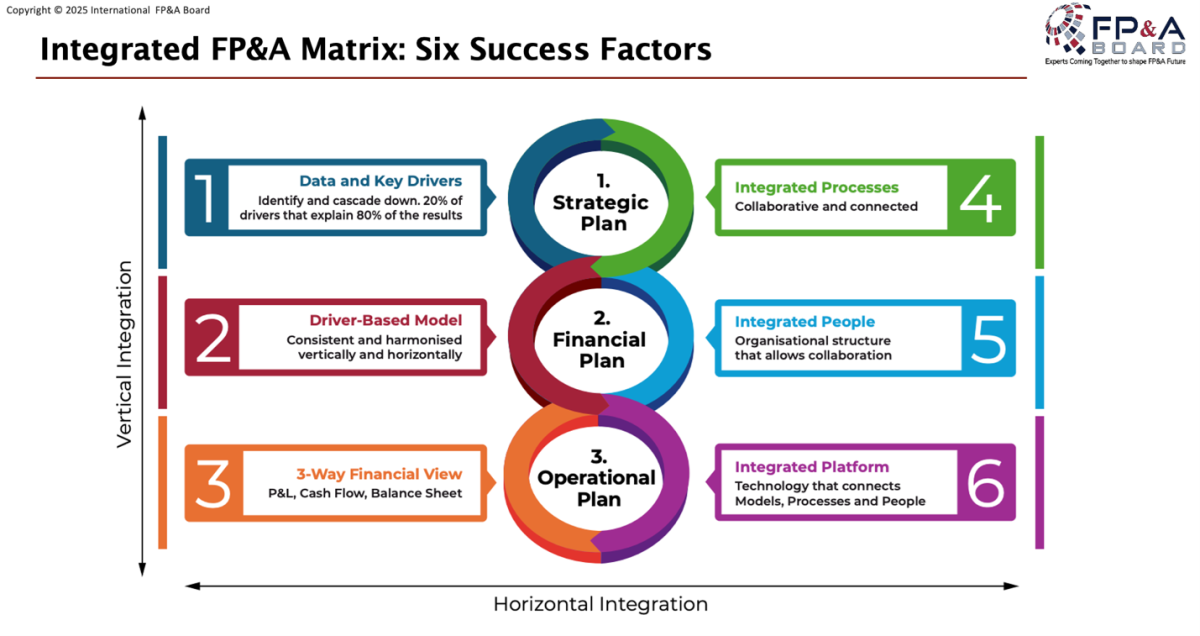
Figure 4
Polling Results: Where Are We Now?
To ground the discussion in real-time data, participants were invited to respond to two live polling questions. The results reflected both progress and ongoing limitations across the FP&A landscape:
1. Where Are You on the FP&A Maturity Ladder?
Participants assessed their current stage using the FP&A Trends Maturity Model:
- 6% – Basic
- 26% – Developing
- 33% – Defined
- 22% – Advanced
- 11% – Leading
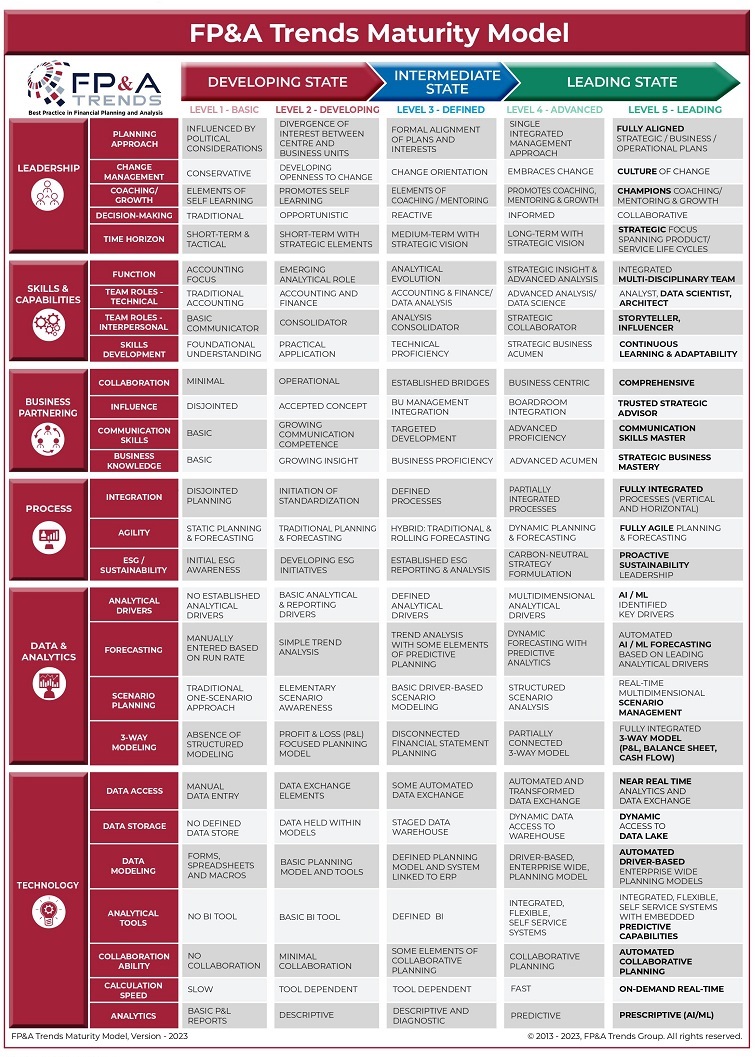
Figure 5
These results suggest that while a large share of organisations have moved beyond foundational capabilities, only a minority have achieved the agility and integration required at the leading edge.
2. How Is AI Currently Being Used in Your FP&A Function?
This question compared Milan responses to those across global Boards:
- 53% – Not using AI at all
- 27% – Automating processes or summarising insights
- 10% – Producing forecasts
- 10% – Analysing patterns in reports
The data underscores the early stage of AI maturity in FP&A. Despite growing interest, most teams remain focused on foundational use cases, such as automation and report generation.
Expert Contributions
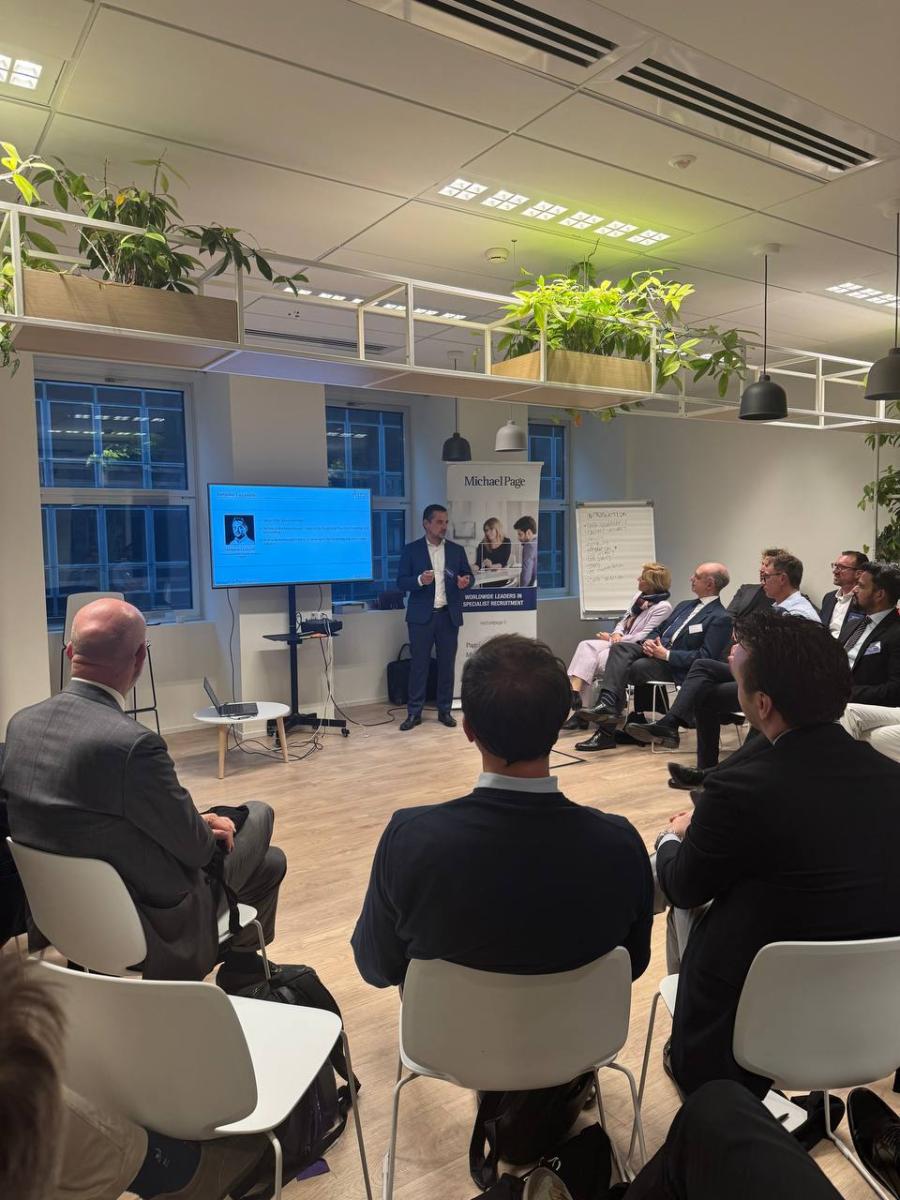
Figure 6: Milan FP&A Board №2 participants, May 2025
Two guest speakers added first-hand perspective on the practical challenges and enablers of xP&A:
- Antonio Lucaselli, Finance Transformation Director at GroupM
Francesco Brillante, CFO Iberia, North America & LATAM at Dedalus Group
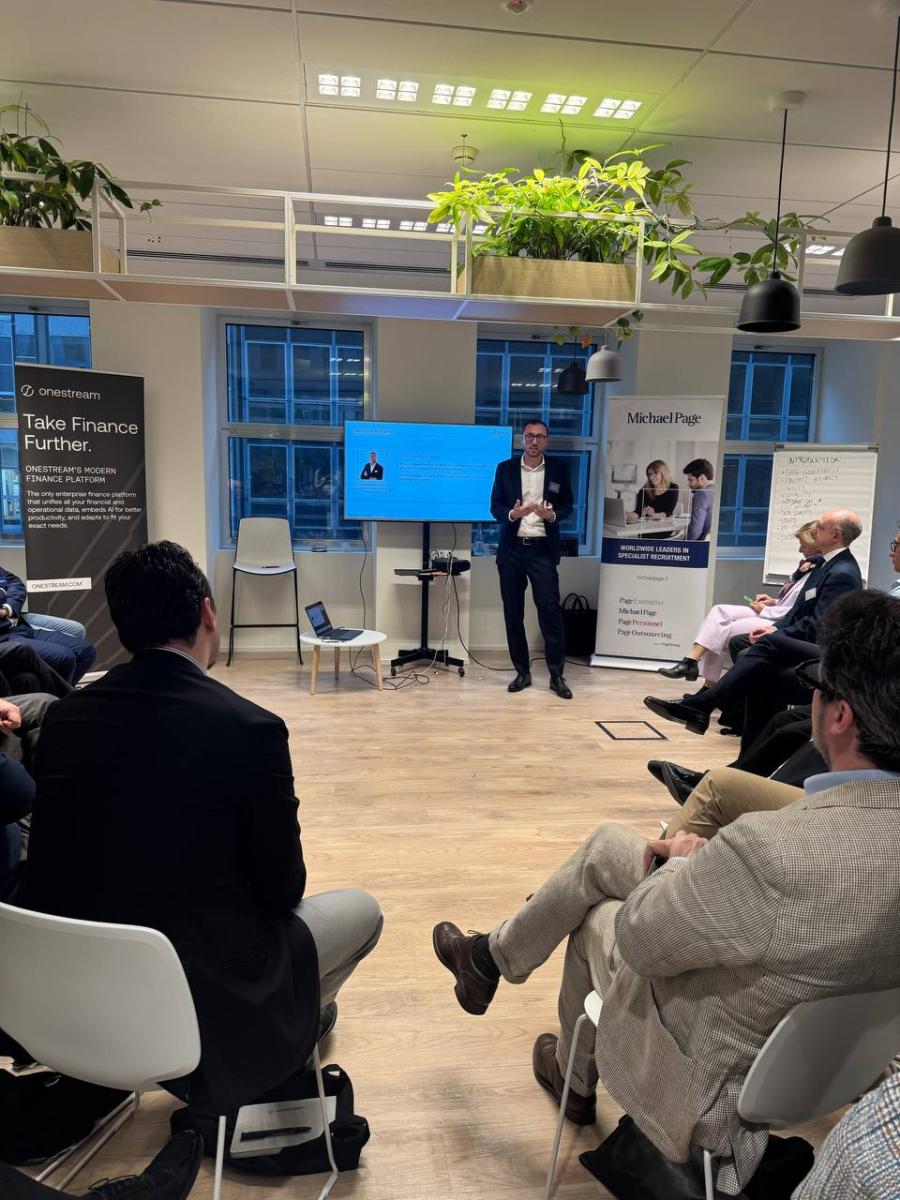
Figure 7: Milan FP&A Board №2 participants, May 2025
Drawing on experiences from large-scale transformation programs, both emphasized the importance of redefining roles, strengthening business partnerships, and integrating planning processes across departments. Their stories confirmed that success in xP&A is rooted not just in systems and tools, but in shared vision and empowered teams.
Conclusion
The Milan FP&A Board closed with a shared recognition: moving to xP&A is no longer an aspiration — it is a necessity. While organisations vary in their maturity, all face the same imperative to plan more collaboratively, respond more rapidly, and align more deeply across functions.
In the final session, participants engaged in structured group work to explore practical strategies for xP&A implementation across three dimensions: systems and processes, data and models, and people and culture. Their collective insights reflected a consistent message — success depends not only on tools and structures, but on change-ready teams and clear, unified direction.
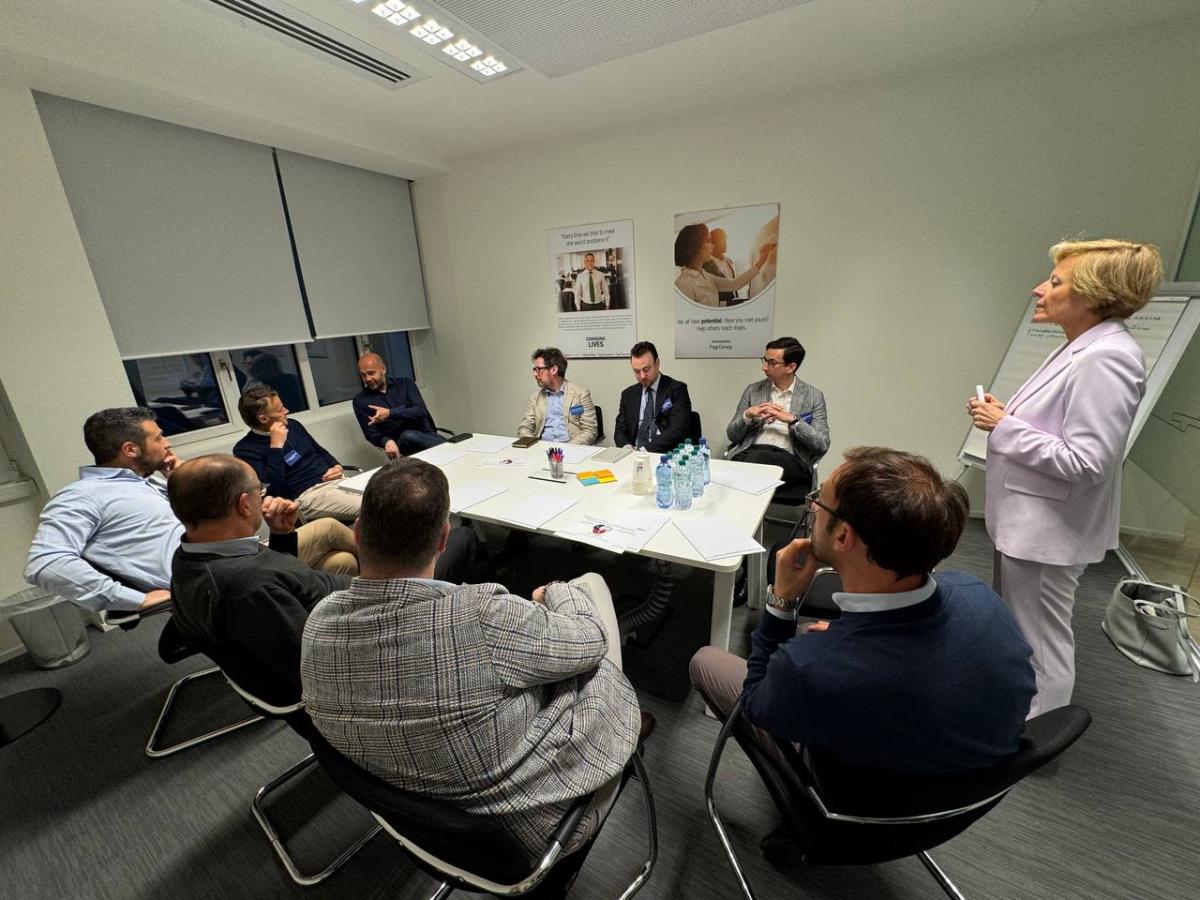
Figure 8: Group Work at Milan FP&A Board №2, May 2025
As Milan’s FP&A leaders continue this journey, the session offered both a benchmark and a blueprint for action.

Figure 9: Members of Milan FP&A Board №2, May 2025







